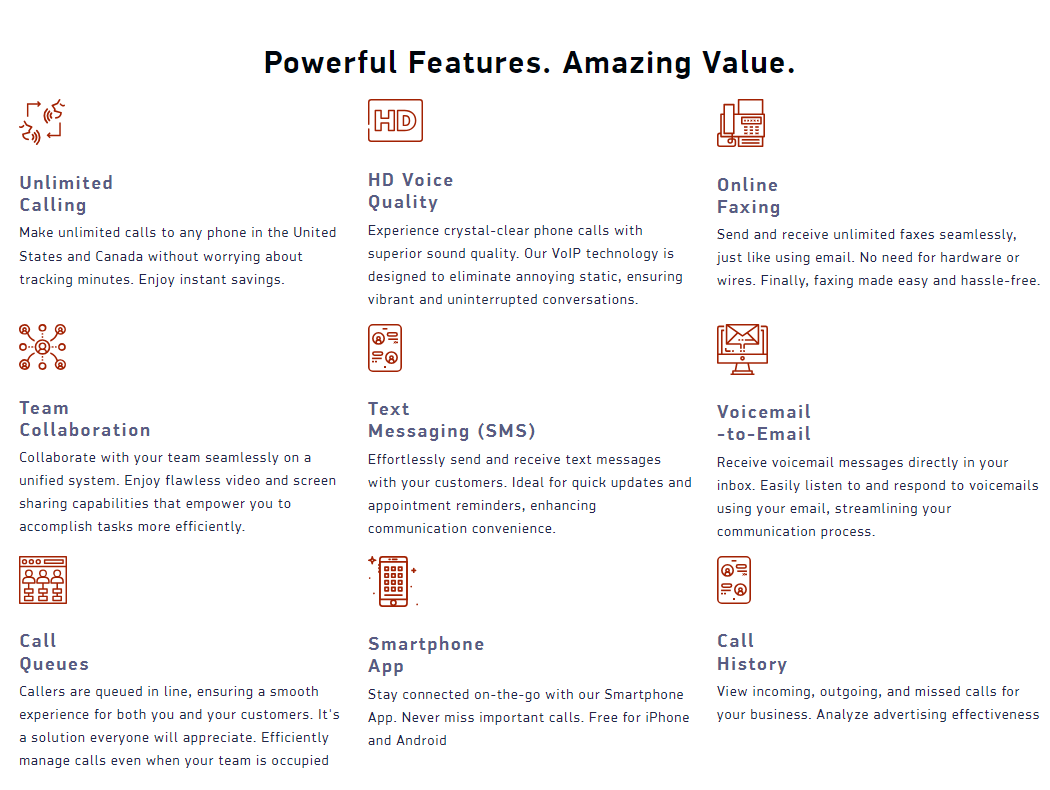In this blog entry, NYC Business Phone communications technology experts here at QTech VoIP will detail the main terms and definitions related to Voice over IP technology that the average modern business owner should understand.
What exactly is VoIP, and its benefits?
Voice over Internet PRotocol systems are a technology that allows for voice communication over the internet, using digital exchange and communications to carry voice and video conversations locally, remotely, and even internationally. It can be used by computers or smart devices, and has remote access to business phone systems. It allows even small businesses to appear large by providing special services associated with large corporations, while still providing clients individualized attention. It can reduce costs by moving to internet-moderated toll-free calls rather than expensive charged calls over traditional phone lines, and additionally encrypts all traffic preventing data loss and the risk of hacking. VoIP has become the predominant communications medium, replacing physical PSTN networks.
Guide to VoIP Terminology
-
General VoIP Terms
- VoIP (Voice over Internet Protocol): Technology that allows voice communication over the internet.
- IP Telephony: Another term for VoIP, focusing on the use of internet protocols for telephony.
- SIP (Session Initiation Protocol): Protocol used to initiate, maintain, and terminate VoIP calls.
- PBX (Private Branch Exchange): A private telephone network for managing calls within a business.
- Softphone: Software-based phone used on devices like PCs or smartphones to make VoIP calls.
- Hosted VoIP: VoIP service managed by a provider, hosted off-site in the cloud.
- On-Premises VoIP: VoIP system hosted and maintained at a company’s physical location.
Call Features
- Auto-Attendant: Automated system to route calls to the appropriate department or extension.
- Call Forwarding: Redirecting calls to another number or device.
- Call Routing: Directing incoming calls to specific extensions or departments.
- Call Waiting: Notification of an incoming call during an ongoing call.
- Caller ID: Displays the phone number or name of the incoming caller.
- Conference Calling: Multiple participants join the same call simultaneously.
- Voicemail-to-Email: Sends voicemail messages as audio files to email.
- Virtual Number: Phone number not tied to a physical location, often used for remote teams.
- Find Me/Follow Me: Routes incoming calls to multiple devices sequentially or simultaneously.
VoIP Infrastructure
- Bandwidth: The amount of data that can be transmitted over an internet connection.
- Codec (Coder-Decoder): Algorithm used to compress and decompress audio or video for transmission.
- QoS (Quality of Service): Technology to prioritize VoIP traffic on a network to ensure call quality.
- Latency: Delay in the transmission of voice packets, affecting call quality.
- Jitter: Variations in packet arrival times, impacting call clarity.
- Packet Loss: When data packets fail to reach their destination, causing call distortion or drops.
- SIP Trunking: Use of SIP to enable VoIP calls through the internet instead of traditional lines.
Security
- Encryption: Secures VoIP communications to prevent unauthorized access.
- Firewall: Network security system to protect against unauthorized access or cyber threats.
- TLS (Transport Layer Security): Encrypts data, ensuring secure VoIP transmissions.
- SRTP (Secure Real-Time Transport Protocol): Ensures secure audio and video streams in VoIP.
Advanced Features
- Unified Communications (UC): Integration of VoIP with other communication tools like chat, video conferencing, and email.
- API (Application Programming Interface): Allows integration of VoIP with other software applications.
- IVR (Interactive Voice Response): Automated menus for caller self-service.
- Hot Desking: Enables employees to use any VoIP-enabled device by logging in to their extension.
- Presence: Shows the availability status of users (e.g., available, busy, away).
- HD Voice: High-definition audio quality for clearer VoIP calls.
Business-Specific Terms
- BYOD (Bring Your Own Device): Policy allowing employees to use their devices for VoIP.
- Cloud PBX: VoIP-based PBX system hosted in the cloud.
- Scalability: The ability of a VoIP system to grow with business needs.
- Mobile VoIP: VoIP services accessible through mobile devices.
Call Analytics and Monitoring
- Call Logs: Records of incoming, outgoing, and missed calls.
- Call Recording: Feature that saves call audio for later review.
- Call Metrics: Data analytics for evaluating call performance, such as duration and frequency.
Technical Terms
- PSTN (Public Switched Telephone Network): Traditional telephone network.
- RTP (Real-Time Transport Protocol): Delivers audio and video over IP networks.
- NAT (Network Address Translation): Facilitates communication between private IP networks and the internet.
- PoE (Power over Ethernet): Technology to power VoIP phones via Ethernet cables.



